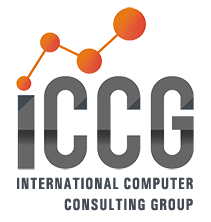1.Critical system failure
Your ERP system crashes in the middle of the night and you are not aware of it until the next morning. Restart and recovery will take several hours, causing a significant loss of revenue.
IT personnel determine that the system crash was due to the failure of an of an aging server with insufficient capacity to handle an ever-increasing amount of transactional data. The CIO refuses to allocate more funds to the outdated and poor performing ERP system infrastructure and charges you with finding a cost-effective solution that will minimize the chances of future system failures.
How can you meet this challenge?
As the lifecycle of an application deployment progresses, similar issues often occur over time, such as:
- Hardware fails, requiring replacement, or it ages to the point where the vendor can no longer support it
- So ware (from the operating system through applications) reaches end-of-life dates and needs to be upgraded or replaced
- Application functionality falls behind what is required for the business to continue to function
Organizations like yours must not only to address immediate challenges to maintaining business continuity, but also to ensure that these challenges don’t occur in the future. A so ware-as-a-service (SaaS) model—where applications are hosted in the cloud—is a viable antidote to these potential issues. With a SaaS solution, the responsibility for managing and maintaining the so ware, including keeping applications upgraded to the most current release, falls to the service provider—whose entire business model is structured around ensuring all hardware and so ware resources are operational and up-to-date.
2. Loss of technical expertise
It’s 9:00 AM Monday morning and your primary ERP administrator walks into your office and submits her resignation. She will be leaving the company in two weeks. No one knows and understands the system like she does and maintaining peak system performance will be almost impossible without her.
How will your organization continue to operate efficiently?
Maintaining the so-called “brain-trust” or technical expertise is critical for every organization. Organizations of all sizes are regularly placed in a position where they lack the internal resources to continue supporting on-premises applications, or they’re dependent on a small group of internal experts or a single person to keep their business applications running. If replacement talent isn’t immediately available, the organization is at much greater risk of mission-critical systems failures that can result in significant damage to the business and potential loss of revenue.
At the same time, enterprise applications and the systems required to support them are growing increasingly complex. Tight IT budgets and the expansive knowledge and expertise required to maintain those applications, make it increasingly challenging for organizations of all sizes to keep such technology running optimally.
Cloud providers devote significant resources to ensuring their sizeable staff are well-versed in all relevant hardware and so ware technologies—old and new. Cloud providers maintain and update comprehensive knowledge bases for their technical staff, ensuring that institutional knowledge is maintained. Access to this technical expertise allows your organization to leverage the extensive knowledge and experience of the cloud provider to keep your business applications up and running.
3. Merger and acquisition
As part of your company’s growth strategy, it has acquired an EU based company. Regulatory requirements for financial reporting and accounting are different for your company and its subsidiary, requiring separate financial data or two separate sets of “books.” Consolidated reporting for the executive team requires manual mapping of data between the two companies and requires extensive time and resources. Closing financial periods and the fiscal year take weeks and countless IT and accounting resources. Visibility and drill-down capabilities into the EU-based company’s system are non-existent.
How do you address the challenges to increase corporate visibility into the system and streamline reporting processes to increase efficiency and lower cost?
Mergers and acquisitions require major changes in organizational makeup. Business applications that support the organization need to be able to scale to handle changing workloads, as well as providing corporate-wide visibility and accessibility in an evolving geographical footprint. IT teams are seldom in a position to implement new networking facilities to support new locations while also performing their existing jobs and supporting other critical IT functions related to merging multiple organizations.
Cloud solutions excel at addressing these issues. In fact, they’re specifically designed to be scalable to handle your organization’s growing and varying workloads, as well as be accessed from virtually anywhere with an internet connection.
Cloud solutions can also provide a unified view of all data across your systems, giving your organization the corporate-wide data visibility required to make informed decisions.
4. Legacy bottlenecks
Your organization’s CFO has become aware of the value of utilizing big data, machine learning, and artificial intelligence for visibility into operational metrics, enhanced reporting, and long-term planning for growth. The CFO has presented his ideas to the other executives and now everyone is pressing for the implementation of these new technologies. There is one problem, however –your current systems and infrastructure cannot provide the bandwidth to fully implement and utilize these new tools.
How can you provide the infrastructure and system scalability that your organization needs to move forward with this initiative?
Relatively new capabilities, such as big data (e.g., data lakes, data warehouses, and IoT capabilities), machine learning, and AI can be extremely difficult to plan, deploy, and even manage in an on-premises environment. Cloud solutions can provide a platform for your organization that supports the dynamic scalability that can handle peak loads, while not oversubscribing resources that should be reserved for normal activity and without incurring costs additional system resources and infrastructure.
5. Security breaches and malicious attacks
Your organization is facing a public relations disaster and potential financial crisis – your entire customer list, including personal information, payment data, and other financial information, has been published on a dark web site. Customers have to be notified—potentially damaging business relationships and impacting revenue. When your IT Security Team investigates, it discovers that a test web service was le running and exposed to the public Internet.
How can you prevent or mitigate the risk of another breach in the future, as well as protect your systems against ever-increasing hacking attempts and malicious attacks?
SaaS solutions offer the most secure environment to keep your organization’s resources safe. The quick- and ever-changing security landscape makes it very difficult for an organization’s IT team to keep up with every potential new cyber threat. In a SaaS solution environment, infrastructure and application security is managed by the service provider, who uses dedicated resources to continually monitor your systems for security breaches and threats, enabling a faster response to any potential problem or identified risk.
Moving business applications to a cloud-based service will allow your organization to isolate and protect its internal networks and the valuable proprietary data it stores on internal systems. In the current era of end-to-end value chain collaboration, third-party vendors and suppliers often require integration with an organization’s enterprise resource planning (ERP) system. If your organization hosts its ERP system in a cloud-based service, vendors and suppliers will never need to connect to the organization’s internal network.
6. Expanding IT Costs
Your IT team is required to implement a major upgrade to the core asset management solution. Major upgrades like this one have been required every three to four years to maintain the system. The IT Manager determines that by the time they account for upgraded hardware, professional services, and time spent, they’ll have spent nearly $600,000. In addition, the manager anticipates adding more personnel to manage the upgraded system. These costs are in addition to continuing so ware maintenance fees.
How can you end this cycle of continually adding resource to the system and costly upgrades?
For on-premises solutions, recurring investments in infrastructure (at all levels), so ware maintenance costs, a steady stream of major upgrade projects, and provisions for disaster recovery capabilities typically add up to more than the cost of a cloud subscription for the same application footprint. Economies of scale make deploying and managing so ware in the cloud for hundreds or thousands of customers very economical and can give your organization a significantly lower total cost of ownership (TCO) than those that stick with on-premises solutions.
How can we help you? It starts with a basic understanding of your current situation and your goals for the coming year. Could we schedule a complimentary 30–60 minute consultation?


